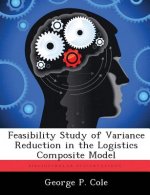
Code: 08287056
Turbulence Modeling for Shock Wave/Turbulent Boundary Layer Interactions
by Randolph P Lillard
Accurate aerodynamic computational predictions are essential for the safety of space vehicles, but these computations are of limited accuracy when large pressure gradients are present in the flow. The goal of the current project i ... more
- Language:
 English
English - Binding: Paperback
- Number of pages: 218
Publisher: Biblioscholar, 2013
- More about this

You might also like
-

Six Months in South Australia
38.05 € -

Search for Life Through the Past
16.80 € -

Love
16.30 € -

Origins of Faith
14.79 € -

Katy's Legacy
27.37 € -

Wordsworth for the Young. with Introduction and Notes by J. C. Wright.
16.80 € -18 % -

Feasibility Study of Variance Reduction in the Logistics Composite Model
59.79 €
Give this book as a present today
- Order book and choose Gift Order.
- We will send you book gift voucher at once. You can give it out to anyone.
- Book will be send to donee, nothing more to care about.
More about Turbulence Modeling for Shock Wave/Turbulent Boundary Layer Interactions
You get 150 loyalty points
 Book synopsis
Book synopsis
Accurate aerodynamic computational predictions are essential for the safety of space vehicles, but these computations are of limited accuracy when large pressure gradients are present in the flow. The goal of the current project is to improve the state of compressible turbulence modeling for high speed flows with shock wave / turbulent boundary layer interactions (SWTBLI). Emphasis will be placed on models that can accurately predict the separated region caused by the SWTBLI. These flows are classified as nonequilibrium boundary layers because of the very large and variable adverse pressure gradients caused by the shock waves. The lag model was designed to model these nonequilibrium flows by incorporating history effects. Standard one- and two-equation models (Spalart Allmaras and SST) and the lag model will be run and compared to a new lag model. This new model, the Reynolds stress tensor lag model (lagRST), will be assessed against multiple wind tunnel tests and correlations. The basis of the lag and lagRST models are to preserve the accuracy of the standard turbulence models in equilibrium turbulence, when the Reynolds stresses are linearly related to the mean strain rates, but create a lag between mean strain rate effects and turbulence when nonequilibrium effects become important, such as in large pressure gradients. The affect this lag has on the results for SWBLI and massively separated flows will be determined. These computations will be done with a modified version of the OVERFLOW code. This code solves the RANS equations on overset grids. It was used for this study for its ability to input very complex geometries into the flow solver, such as the Space Shuttle in the full stack configuration. The model was successfully implemented within two versions of the OVERFLOW code. Results show a substantial improvement over the baseline models for transonic separated flows. The results are mixed for the SWBLI assessed.
 Book details
Book details
Book category Books in English Society & social sciences Education
59.79 €
- Full title: Turbulence Modeling for Shock Wave/Turbulent Boundary Layer Interactions
- Author: Randolph P Lillard
- Language:
 English
English - Binding: Paperback
- Number of pages: 218
- EAN: 9781288911356
- ISBN: 9781288911356
- ID: 08287056
- Publisher: Biblioscholar
- Weight: 399 g
- Dimensions: 246 × 189 × 12 mm
- Date of publishing: 12. March 2013
Trending among others
-

Cambridge IGCSE (R) & O Level Complete Physics: Student Book Fourth Edition
41.97 € -

Cambridge IGCSE (R) & O Level Complete Biology: Student Book Fourth Edition
41.97 € -

Cambridge IGCSE (R) & O Level Complete Chemistry: Student Book Fourth Edition
50.93 € -

Oxford IB Diploma Programme: IB Economics Course Book
62.31 € -

Oxford International Primary Science Second Edition: Workbook 4
14.99 € -

Oxford IB Study Guides: Economics for the IB Diploma
47.71 € -

Business Partner B1 Workbook
17.71 € -7 % -

Business Partner B2 Workbook
16.90 € -6 % -

AQA GCSE German Foundation Practice Papers
15.29 € -

AQA French A Level Year 1 and AS
50.33 € -

CompTIA Security+ Review Guide - Exam SY0-601
24.76 € -24 % -

Cambridge IGCSE (R) & O Level Complete Biology: Print and Enhanced Online Student Book Pack Fourth Edition
61.10 € -

Oxford IB Diploma Programme: IB Theory of Knowledge Course Book
57.98 € -

geog.2 Workbook
11.47 € -6 % -

Teach Reading With Orton-gillingham
18.82 € -10 % -

KS3 Maths 10-Minute Weekly Workouts - Year 7
8.04 € -8 % -

Blue Book of Grammar and Punctuation: An Easy- to-Use Guide with Clear Rules, Real-World Examples , and Reproducible Quizzes, Twelfth Edition
15.09 € -28 % -

Business Partner B1+ Workbook
16.90 € -3 % -

Powerful Teaching: Unleash the Science of Learning
26.17 € -26 % -

Embodied Teen
21.64 € -16 % -

(ISC) SSCP SG & SSCP Practice Test Kit, 3e
65.13 € -27 % -

Growth Mindset Classroom-ready Resource Book
16.20 € -28 % -

AQA A Level Biology Revision Guide
25.56 € -5 % -

UKCAT For Dummies
23.15 € -28 % -

Oxford International Primary Maths Second Edition: Practice Book 1
12.17 € -

Oxford International Primary Science Second Edition: Student Book 1
26.77 € -

Donny's Unauthorized Technical Guide to Harley Davidson 1936 to Present
47.91 € -16 % -

OET Speaking for Nurses Book 2
11.57 € -2 % -

Edexcel International GCSE Chemistry Student Book Second Edition
31.60 € -14 % -

Oxford International Primary Maths Second Edition: Practice Book 2
12.17 € -

Cambridge IGCSE (R) & O Level Complete Physics: Print and Enhanced Online Student Book Pack Fourth Edition
62.91 € -

OET Speaking For Nurses Book 1
12.78 € -

Walk Your Talk; Tools and Theories To Share Nonviolent Communication
29.29 € -

Oxford International Primary Maths Second Edition: Practice Book 3
13.58 € -

Social Skills Activities for Secondary Students wi th Special Needs, Third Edition
26.37 € -21 % -

geog.1 5th edition Workbook Answer Book
70.36 € -

New KS2 English Year 5 Foundation Grammar, Punctuation & Spelling Targeted Question Book w/Answers
8.95 € -5 % -

New KS2 English Year 4 Foundation Grammar, Punctuation & Spelling Targeted Question Book w/Answers
8.95 € -5 % -

Making Escape Rooms for Educational Purposes
18.72 € -

Cambridge IGCSE (R) & O Level Complete Chemistry: Print and Enhanced Online Student Book Pack Fourth Edition
62.91 € -

Oxford International Primary Maths Second Edition: Practice Book 5
16.10 € -

Education in the New Age
12.88 € -

240 Vocabulary Words Kids Need to Know: Grade 3
11.37 € -19 % -

Oxford IB Diploma Programme: Oxford IB Diploma Programme: IB Mathematics: applications and interpretation Standard Level Enhanced Online Course Book
110.23 € -

OET Preparation
9.65 € -

Speed and Accuracy: Multiplication
8.65 € -

ESL/ELL Teacher's Survival Guide: Ready-to-Use Strategies, Tools, and Activities for Teaching En glish Language Learners of All Levels, 2nd Edition
29.69 € -21 % -

KS3 Maths 10-Minute Weekly Workouts - Year 8
8.04 € -8 % -

Speed and Accuracy: Division
8.65 €
Collection points Bratislava a 2642 dalších
Copyright ©2008-24 najlacnejsie-knihy.sk All rights reservedPrivacyCookies



 15549 collection points
15549 collection points Delivery 2.99 €
Delivery 2.99 € 02/210 210 99 (8-15.30h)
02/210 210 99 (8-15.30h)